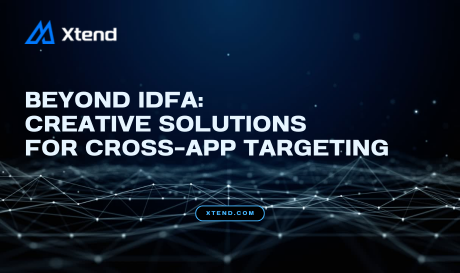In the post-IDFA world, mobile marketers and app developers have been forced to rethink their targeting strategies. While Apple's App Tracking Transparency framework has created new challenges, it has also sparked innovation in the mobile advertising ecosystem. Let's explore effective alternatives that are helping businesses maintain performance while respecting user privacy.
The Current Landscape
The deprecation of IDFA (Identifier for Advertisers) has fundamentally changed how we approach user targeting across iOS apps. With opt-in rates varying significantly by app category and region, relying solely on IDFA is no longer viable. However, this shift has opened doors to more creative and privacy-conscious solutions.
Alternative Targeting Solutions
1. Contextual Targeting 2.0
Modern contextual targeting goes far beyond basic category matching. Advanced algorithms now analyze:
- App content and functionality
- User interaction patterns
- Time-based usage behaviors
- Genre preferences and app category affinity
This provides rich targeting signals without requiring personal identifiers.
2. On-Device Processing
By moving data processing to the device level, apps can:
- Maintain user privacy while delivering personalized experiences
- Process behavioral signals locally
- Make targeting decisions without sharing personal data
- Reduce reliance on third-party identifiers
3. Probabilistic Matching
While less precise than deterministic matching, probabilistic approaches using non-personal signals can be effective:
- Device type and model
- Operating system version
- General location (city/region level)
- Time patterns of app usage
- Common app groupings
4. First-Party Data Strategies
Developing robust first-party data capabilities is crucial:
- Build direct relationships with users
- Offer clear value exchanges for data sharing
- Create authenticated experiences
- Leverage owned channels like email and push notifications
Best Practices for Implementation
1. Privacy by Design
- Make privacy considerations central to targeting strategy
- Be transparent about data usage
- Give users clear control over their data
2. Testing and Measurement
- Implement robust testing frameworks
- Focus on incrementality measurement
- Use privacy-preserving attribution methods
3. Diversification
- Don't rely on a single targeting solution
- Build a portfolio of complementary approaches
- Maintain flexibility to adapt to changing conditions
Looking Ahead
The future of mobile targeting lies in solutions that balance effectiveness with privacy. Success will come to those who:
- Invest in first-party data infrastructure
- Develop creative targeting alternatives
- Build trust through transparency
- Remain adaptable to changing technology and regulations
While the loss of IDFA presented initial challenges, it has pushed our industry toward more sustainable and privacy-conscious targeting solutions. By embracing these alternatives and focusing on innovation, mobile marketers can continue to deliver value while building trust with their users.
The key is not to view privacy requirements as limitations, but as opportunities to develop better, more responsible targeting practices that benefit both businesses and users in the long run.











